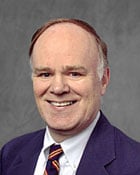On January 29, 2004, the New York Stock Exchange released answers (some of which were updated on February 13, 2004) to over 50 FAQs about its new corporate governance listing standards. The FAQs are divided into sections covering: transition periods (Section A), disclosure and certifications (Section B), independence determinations (Section C), non-management director communications requirements (Section D), compensation committee requirements (Section E), audit committee requirements (Section F), code of business conduct and ethics requirements (Section G), and foreign private issuer disclosure (Section H).
This Client Alert summarizes selected matters discussed in the FAQs. We previously discussed the initial, interim, and final versions of the NYSE’s corporate governance rules in Client Alerts that are available on our website by clicking on the following links:
- NYSE Submits Final Proposed Rule Changes on Corporate Governance Issues to SEC-September 6, 2002,
- NYSE Revises Independent Director Definition-March 28, 2003,
- SEC Approves NYSE and NASDAQ Corporate Governance Rules-November 12, 2003, and
- Supplement: Summary of NYSE and NASDAQ Corporate Governance Rules-November 12, 2003 Supplement (full discussion of final corporate governance listing standards).
Section A-Transition Periods
Controlled Companies. If a controlled company ceases to be controlled, it must have at least one independent director on its nominating and compensation committees as of the date it ceases to be controlled; a majority of independent directors on those committees within 90 days after it ceases to be controlled; and fully independent nominating and compensation committees and a majority independent board within one year after it ceases to be controlled. In addition, the company will be required to have adopted the requisite committee charters as of the date it ceases to be controlled. See FAQ A(8).
Classified Boards. A company with a classified board that is able to fully or substantially comply with all Section 303A independent director requirements as of its 2004 annual meeting by electing one or more independent directors at its 2004 Annual Meeting cannot choose to wait until the 2005 annual meeting to fully comply. The grace period for companies with classified boards is only available for companies that would be forced to replace non-independent directors who are not up for election in 2004 in order to fully comply as of the company’s Section 303A compliance date even if all nominees otherwise up for election in 2004 would not be sufficient to cause compliance. See FAQ A(9).
Section B-Disclosure and Certifications
Timing. New Section 303A disclosures required to be included in a company’s annual report or proxy statement and on its website do not have to be made until after the earlier of a company’s next annual meeting or October 31, 2004. For calendar year companies, the new disclosures will not be required until early 2005. The NYSE nonetheless encourages companies to make these disclosures voluntarily in upcoming annual reports and proxy statements and on their websites if it is feasible to do so. See FAQ B(1).
Certifications in Annual Report. The CEO/CFO certification required by Section 303A.12(a) (see Section 303A.12(a) Commentary) to be included in a company’s annual report to shareholders is the Sarbanes-Oxley Section 302 certification. If a company chooses to distribute a glossy annual report to shareholders rather than a “wrapped” Form 10-K that already includes the Section 302 certification as an exhibit, the company may disclose that it has filed the Section 302 certification as an exhibit to its Form 10-K, instead of repeating that certification in the glossy annual report. See FAQ B(2).
NYSE CEO Certification. Companies must submit the CEO certification required by Section 303A.12(a) (that the CEO is not aware of any violations of the NYSE corporate governance standards) no later than 30 days after the annual shareholder meeting. See FAQ B(3). The NYSE form of the CEO certification will be published on the NYSE’s website shortly.
Written Affirmations. The Written Affirmation relating to compliance with the NYSE’s audit committee requirements will still be required to be filed with the NYSE approximately 30 days after the annual shareholder meeting. In addition, the NYSE will now require interim certifications whenever:
- A director is added or removed from the board, and
- There are changes in the composition of the audit, nominating, or compensation committees.
Forms for the annual Written Affirmation and the interim affirmations will be available on the NYSE website shortly. See FAQ B(4).
Section C-Independence Determinations
Bright Line Independence Criteria. A company may not take the position that any director who satisfies only the bright line independence criteria set forth in Section 303A.02(b) is per se independent. The board is still required under Section 303A.02(a) to make an affirmative determination that the director has no material relationship with the company. The relationships described in Section 303A.02(b) were not intended to be an exhaustive list of circumstances or relationships that would preclude independence. The NYSE provides that the board can adopt a categorical list of independence standards to assist in making independence determinations. However, the NYSE expressed concern that a board which adopts as categorical standards only the NYSE bright-line test for determining independence (concluding that all other relationships are, by definition, immaterial) may raise shareholder concern about the thoroughness of the Board’s independence determinations. See FAQ C(2).
Mergers. If a listed company acquires or merges with a company that is not listed, an employee of the target may be deemed independent for purposes of the listed company’s board so long as his or her employment relationship ended prior to, or concurrent with, the transaction. See FAQ C(3)B.
Consolidated Parents or Subsidiaries. To the extent that a parent or subsidiary of a listed company is consolidated with the financial statements of the listed company, Section 303A.02(b)’s bright line tests apply to those entities as though they were the listed company. See FAQ C(3)C.
$100,000 Direct Compensation Test.
- Any director or his or her immediate family member who has received, during any twelve-month period within the last three years, more than $100,000 in direct compensation from the listed company is deemed to fail the independence test. See FAQ C(12).
- The following do not constitute direct compensation:
• Dividend or interest income and reimbursement for bona fide and documented expenses. See FAQ C(8) and C(9).
• Severance payments and non-compete arrangements, because they do not typically require continued services. See FAQ C(10). - Payments to an individual’s solely-owned business entity are considered direct compensation. See FAQ C(11).
Section 303A.02(b)(v)’s Revenue Test: “Current Employee” Aspect. Once a director’s employment with a company that has, or within the past one/three most recently completed fiscal years (as applicable) had, a relationship with a listed company that resulted in payments or receipts in excess of the limits ceases, the director can be considered to be independent for purposes of this section even if the relationship between the two companies continues. See FAQ C(15).
Section 303A.02(b)(v)’s Revenue Test: Loans, Aggregation, and “Last Completed Fiscal Year.”
- Loans from financial institutions are not considered “payments,” but interest and fees paid on those loans are considered “payments.” See FAQ C(16).
- Companies should not net payments made to against payments received from a listed company to measure against a director company’s revenues for purposes of this section. See FAQ C(17).
- Payments and consolidated gross revenues of the director’s company for its last completed fiscal year should be measured against the consolidated gross revenues of the director’s company’s (and not the listed company’s) last completed fiscal year. See FAQ C(18).
Section D-Non-Management Director Communications
Screening. A company may designate an employee, including a corporate secretary or general counsel, to act as an agent for the non-management directors in facilitating direct communications to the board. The employee may not screen or “filter out” any direct communications from being presented to the non-management directors without instruction from the non-management directors.
- The non-management directors should establish procedures for how direct communications should be handled, including if and when such communications should be shared with a company’s management. See FAQ D(1).
Section G-Code of Business Conduct and Ethics
Section 303A.10’s Prompt Waiver Disclosure. With respect to a board’s determination to approve any waiver from the company’s code of business conduct and ethics, the distribution of a press release within 2-3 business days of such a determination, website disclosure, and notice to the SEC on Form 8-K constitute a non-exclusive list of prompt waiver disclosure actions. See FAQ G(1).
Contact Information
If you have any questions or would like to learn more about these FAQs, please contact your usual legal advisor at Ropes & Gray.
Stay Up To Date with Ropes & Gray
Ropes & Gray attorneys provide timely analysis on legal developments, court decisions and changes in legislation and regulations.
Stay in the loop with all things Ropes & Gray, and find out more about our people, culture, initiatives and everything that’s happening.
We regularly notify our clients and contacts of significant legal developments, news, webinars and teleconferences that affect their industries.





